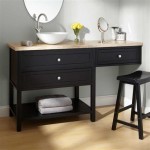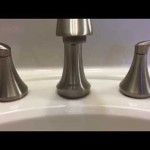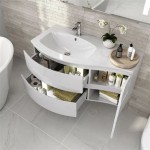How To Best Clean Bathroom Floors: A Comprehensive Guide
Maintaining a clean bathroom floor is essential for hygiene, aesthetics, and preventing the growth of mold and mildew. The bathroom environment, characterized by high humidity and frequent spills, creates an ideal breeding ground for bacteria and fungi. Therefore, regular and effective cleaning practices are crucial. This article provides a comprehensive guide to cleaning bathroom floors, covering various floor types, necessary tools, optimal cleaning solutions, and step-by-step instructions for achieving a sparkling and sanitary result.
The frequency with which a bathroom floor should be cleaned depends on several factors, including the number of people using the bathroom, the frequency of use, and the presence of pets. In general, a bathroom floor should be cleaned thoroughly at least once a week. However, high-traffic bathrooms or those prone to spills may require more frequent cleaning. Spot cleaning should be performed as needed to address spills and stains promptly, preventing them from setting and becoming more difficult to remove. Regular sweeping or vacuuming will also help to remove loose dirt and debris, minimizing the buildup of grime and making the weekly cleaning process more manageable.
Before embarking on the cleaning process, identifying the type of flooring in the bathroom is paramount. Different flooring materials require different cleaning approaches and solutions. Using the wrong cleaning agent can damage the floor surface, leading to discoloration, etching, or other forms of degradation. Common bathroom floor materials include tile (ceramic, porcelain, stone), vinyl, laminate, and occasionally, wood. Each of these materials has unique properties and sensitivities that must be considered when selecting a cleaning method.
Tile floors, including ceramic and porcelain, are generally durable and resistant to water damage. However, the grout lines between the tiles are porous and can accumulate dirt, mildew, and stains. Stone tiles, such as marble or granite, require special care as they are susceptible to scratching and etching from acidic cleaners. Vinyl floors are relatively easy to clean and maintain but can be damaged by harsh chemicals or abrasive scrubbing. Laminate floors are sensitive to moisture and should be cleaned with a damp mop rather than a soaking wet one. Wood floors, while less common in bathrooms, require careful attention to prevent water damage and warping.
Key Point 1: Gathering Essential Cleaning Supplies
Before beginning the cleaning process, gathering the necessary cleaning supplies is essential for efficiency and effectiveness. The specific supplies required will depend on the type of flooring and the severity of the dirt and stains. However, some basic supplies are generally applicable to most bathroom floor cleaning tasks. These include:
1. Broom or Vacuum Cleaner: A broom or vacuum cleaner is necessary for removing loose dirt, dust, hair, and other debris from the floor surface. A vacuum cleaner with a hard floor attachment is particularly useful for reaching into corners and crevices.
2. Mop and Bucket: A mop and bucket are essential for applying cleaning solution to the floor and removing it. A microfiber mop is recommended as it is absorbent and effective at removing dirt and grime. A double-bucket system, with one bucket for the cleaning solution and another for rinsing the mop, can help prevent spreading dirty water across the floor.
3. Cleaning Solution: The choice of cleaning solution will depend on the type of flooring and the nature of the dirt and stains. For tile floors, a mild all-purpose cleaner or a solution of vinegar and water can be effective. For stone floors, a pH-neutral cleaner specifically designed for stone is recommended. For vinyl floors, a mild detergent or a commercial vinyl floor cleaner can be used. For laminate floors, a damp mop with a small amount of laminate floor cleaner is sufficient. It's crucial to always test any cleaning solution in an inconspicuous area before applying it to the entire floor.
4. Grout Brush: A grout brush is a small, stiff-bristled brush specifically designed for cleaning grout lines. It can be used to scrub away dirt, mildew, and stains that accumulate in the grout.
5. Scrub Brush: A scrub brush can be used for tackling stubborn stains or areas of heavy dirt buildup on tile or vinyl floors. Choose a brush with non-abrasive bristles to avoid scratching the floor surface.
6. Protective Gloves: Wearing protective gloves is essential to protect the hands from harsh chemicals and potential irritants. Gloves can also help to prevent the transfer of bacteria from the bathroom floor to the hands.
7. Cleaning Rags or Microfiber Cloths: Cleaning rags or microfiber cloths are useful for wiping up spills, drying the floor, and polishing surfaces. Microfiber cloths are particularly effective at removing dirt and grime without leaving streaks.
8. Spray Bottle: A spray bottle can be used to apply cleaning solution to specific areas or stains. This is particularly useful for spot cleaning or for applying grout cleaner.
Key Point 2: Step-by-Step Cleaning Process
The following step-by-step process outlines the general procedure for cleaning bathroom floors. Specific adjustments may be necessary based on the type of flooring and the severity of the dirt and stains.
Step 1: Prepare the Floor: Begin by removing all loose items from the floor, such as rugs, bath mats, and trash cans. This will provide clear access to the entire floor surface.
Step 2: Sweep or Vacuum: Use a broom or vacuum cleaner to remove loose dirt, dust, hair, and other debris from the floor. Pay particular attention to corners, edges, and areas under cabinets and toilets.
Step 3: Prepare the Cleaning Solution: Prepare the cleaning solution according to the manufacturer's instructions or the recommended dilution ratio. For a vinegar and water solution, mix equal parts vinegar and water in a bucket. Ensure the water is lukewarm to avoid damaging certain floor types.
Step 4: Apply the Cleaning Solution: Dip the mop into the cleaning solution, wring out the excess water, and apply the solution to the floor in sections. Avoid over-saturating the floor, as this can lead to water damage, especially on laminate or wood floors.
Step 5: Scrub Stubborn Stains: For stubborn stains or areas of heavy dirt buildup, use a grout brush or scrub brush to scrub the affected area. Apply a small amount of cleaning solution directly to the stain and scrub in a circular motion. Be careful not to apply excessive pressure, as this can damage the floor surface.
Step 6: Clean Grout Lines: Use a grout brush to scrub the grout lines. Apply a grout cleaner or a paste of baking soda and water to the grout and scrub vigorously. Rinse the grout lines with clean water.
Step 7: Rinse the Floor: If necessary, rinse the floor with clean water to remove any residual cleaning solution. Use a clean mop and bucket of water to rinse the floor in sections. Ensure all traces of cleaning solution are removed, as residue can attract dirt and leave streaks.
Step 8: Dry the Floor: Use a clean, dry mop or microfiber cloth to dry the floor. This will help prevent water spots and streaks. Open windows or use a fan to speed up the drying process.
Step 9: Replace Items: Once the floor is completely dry, replace all the items that were removed at the beginning of the cleaning process, such as rugs, bath mats, and trash cans.
Key Point 3: Addressing Specific Flooring Types and Challenges
Different flooring types present unique cleaning challenges and require specific cleaning approaches. Understanding these nuances is crucial for maintaining the floor's appearance and longevity.
Tile Floors (Ceramic and Porcelain): While generally durable, tile floors are susceptible to staining, particularly in the grout lines. Acidic cleaners should be avoided on colored grout as they can cause discoloration. For deep cleaning grout, consider using a commercial grout cleaner or a solution of baking soda and hydrogen peroxide. Apply the solution to the grout lines, let it sit for a few minutes, and then scrub with a grout brush.
Stone Floors (Marble and Granite): Stone floors require gentle cleaning solutions and techniques to avoid scratching or etching the surface. Use a pH-neutral cleaner specifically designed for stone floors. Avoid using acidic cleaners, such as vinegar, lemon juice, or ammonia, as they can damage the stone. Clean spills immediately to prevent staining. Consider sealing stone floors periodically to protect them from moisture and stains.
Vinyl Floors: Vinyl floors are relatively easy to clean, but they can be damaged by harsh chemicals or abrasive scrubbing. Use a mild detergent or a commercial vinyl floor cleaner. Avoid using abrasive cleaners or scrub brushes, as they can scratch the surface. Protect vinyl floors from direct sunlight, as prolonged exposure can cause fading.
Laminate Floors: Laminate floors are sensitive to moisture and should be cleaned with a damp mop rather than a soaking wet one. Use a laminate floor cleaner specifically designed for laminate floors. Avoid using abrasive cleaners or scrub brushes, as they can scratch the surface. Clean spills immediately to prevent water damage.
Wood Floors: Wood floors are less common in bathrooms due to their sensitivity to moisture. If a bathroom has wood floors, it is crucial to take extra care to prevent water damage. Use a damp mop rather than a soaking wet one. Use a wood floor cleaner specifically designed for wood floors. Clean spills immediately and dry the floor thoroughly. Consider applying a sealant to protect the wood from moisture.
Beyond specific materials, additional considerations can improve bathroom floor cleaning effectiveness. Adequate ventilation is important to remove excess moisture and prevent mold and mildew growth. Using a dehumidifier can also help to reduce humidity levels in the bathroom. When selecting cleaning products, prioritize those that are environmentally friendly and safe for children and pets. Regular maintenance and prompt attention to spills and stains will contribute to a cleaner, healthier, and more aesthetically pleasing bathroom environment.

How To Clean Bathroom Tiles With Baking Soda Mygate

7 Most Powerful Ways To Clean Tiles Grout Naturally

Best Bathroom Cleaner Without Bleach Steam Clean Kärcher

What Is The Best Way To Clean Bathroom Shower Tiles Tile Warehouse

How To Clean Ceramic Tile Floors

How To Deep Clean A Tile Floor Maid Sailors

Best Ways To Deep Clean Your Bathroom

How To Deep Clean Bathroom Tiles Floor Grouts Faucets Hard Water Stains Everything

9 Best Bathroom Cleaners Of 2024 Top Cleaning S

How To Clean Tile Floors Best Cleaning Tips Sabco
Related Posts







